The US Military Modular Sleep System, or MSS for short, is a combination of sleeping components designed to allow a soldier to stay in the field under a wide range of conditions. The system is comprised of four elements. It contains two sleeping bags, a bivy bag, and a stuff sack.
The two sleeping bags and the bivy can work independently, or can be combined into one sleep system.
Many years ago, I purchased a MSS (Modular Sleep System), and used it for a very long time. In fact, I still use one of the components. I have been reluctant to do a full review of the MSS until now, for several reasons.
The first is that it is very hard to review military surplus gear, especially something like a sleeping bag. The reason is that there is no way to guarantee the condition of the product, and as a result, it is impossible to say if the particular example a person will buy would be any good. Even if you buy an unused Modular Sleep System (MSS), the way it has been stored over the years, will drastically alter its condition. During the past five years the bags might have been kept in a completely dry environment somewhere in Arizona, where they were loosely stored and taken care of; or they could have been stored in 90% humidity in Louisiana under a pile of shovels.
The second reason was that it was not a cost effective sleep system. Back when I purchased my MSS, the cost was about $350, and you had to search around to find it that cheap. For that price, you can find much better commercially available bags, so I never bothered reviewing this one.
However, things have changed. The US military has stopped using the original Modular Sleep System (MSS), and has now transitioned to a new version which can be distinguished by different colors (a lot of use of grey) and the ACU pattern. The system is largely the same, but all of the old models are currently being dumped on the market. As a result, prices have dropped to a point where they are irresistible. You can find complete used sets for as little as $50 and genuine new ones for about $150. That’s a price that is hard to beat no matter what the condition of the bags might be.
The available information on the MSS currently on the web is all over the place. You can not find two websites which give you the same stats on the system. So, I am going to try to write a comprehensive review here based on my experience with two different sets of the US Military Modular Sleep System (MSS) and the measurements I have personally made. Like I said above, condition is not consistent across the board, so your experience might be somewhat different, not to mention that sleeping bag warmth vary significantly from person to person. You know how I camp and what I use, so hopefully that will help you judge for yourself.
As I mentioned above, the US Military Modular Sleep System (MSS) is comprised of four components, two synthetic sleeping bags, a bivy bag, and a stuff sack.
Green Patrol Sleeping Bag:
The first component is the Patrol sleeping bag. It is green in color, and is intended for warm weather use. Since the specifications are all over the place, it is hard to get an official temperature rating, but based on my use, I would say that it would be between a 32F (0C) and 40F (4C). If rated as a commercial bag, it would probably be rated closer to 40F (4C).
It is the lighter of the two sleeping bags. I still use mine for three season camping. I personally use it successfully down to about 32F (0C). Of course, how you use the bag will also make a difference to how warm you stay. Back when I used to use it US military surplus closed cell foam pad, I would get cold in the bag if the temperature got anywhere near 40F (4C). When I started using a warmer pad however, I was easily able to stay comfortable down to 32F (0C) with the use of some clothing. Of course, that doesn’t make it a 32F (0C) bag according to commercial standards, but it can be made to work at those temperatures without much effort.
According to my measurements, the green Patrol sleeping bag weighs 2lb 5oz, and compresses into a stuff sack that is 8 inches in diameter and 6 inches tall. It fits perfectly into a fully compressed Sea to Summit medium side dry bag (4.5L). The bag uses Polyguard HV insulation and has a ripstop nylon shell.
In the above picture you can see the Patrol bag in a Sea to Summit medium size stuff sack, next to a Nalgene bottle for comparison.
Black Intermediate Cold Sleeping Bag:
The second sleeping bag in the system is the Intermediate Cold sleeping bag. It is black in color, and is intended for cold weather use. I have seen some temperature ratings floating around of –10F (-23C). I assume they were released by the military, as I find them quite optimistic. Keep in mind that the military temperature ratings usually show the temperature in which a soldier can survive for a certain period of time (usually 4 hours), not the temperature at which a person can be comfortable.
Based on my use, I would say the comfort rating of the bag is about 10F (-12C). With my bag and a closed cell foam pad, I would start getting cold around 15F (-9C). I would still be able to sleep, buy I would wake up from time to time feeling cold. With the use of a good pad, 10F (12C) I think is realistic. With extra clothing, and in a well protected space, I would be willing to push it down to 0F (-18C).
The bag is adequate, but it’s missing some features which you find on a lot of modern cold weather bags. It does not have a synch along the neck baffle, which doesn’t even go all the way around, it does not have continuous baffle tubes so that you can readjust the insulation, it does not have a water repellant shell, and the draft tube along the zipper is narrow by comparison to commercial bags.
The black Intermediate Cold bag weighs 4lb 6oz, and compresses into a stuff sack that is 8 inches in diameter and 17 inches tall. It also fits into a medium Sea to Summit compression stuff sack, but barely. It takes up about 13L. It also uses Polyguard HV insulation and has a ripstop nylon shell.
I don’t use the black Intermediate Cold bag from the US Military Modular Sleep System (MSS) anymore because it is bulky and heavy compared to other options. My Western Mountaineering Antelope MF 0F (-18C) bag weighs 2lb 7oz, and compresses to the same size as the green Patrol bag. Of course, it costs a lot more. In this instance, you get what you pay for. That being said, I used this bag for many years when winter camping, and I made it work for me.
In the above picture you can see an Intermediate Cold sized bag in a Sea to Summit medium size stuff sack, next to a Nalgene bottle for comparison.
GoreTex Bivy Bag:
The third component of the system is a GoreTex bivy bag. The bivy bag is very basic in design. It has no netting, no hoops, no pockets. It is as basic as it gets: a zipper, some button snaps to attach it to the sleeping bags, and a GoreTex enclosure. In fact, this is exactly how I like my bivy bags. Simplicity is what I look for, and I have not been able to find it in commercially available bivy bags.
Unfortunately however, as this is a product designed for the military, even though it is very basic, that does not translate to low weight. Shockingly, the bivy from the Modular Sleep System (MSS) weighs 2lb 3oz. It is almost as much as the Patrol sleeping bag.
The GoreTex is very durable and completely waterproof. You get the same condensation issues you would with any bivy, but nothing noteworthy. I used the US Military Modular Sleep System (MSS) bivy for a very long time, until one day I actually put it on a scale and measured it. The weight was prohibitive. My GoLite Shangri-La 3 tent weighs 1lb 8oz. I can not justify carrying a bivy that is heavier than a tent.
Compression Stuff Sack:
The last component of the US Military Modular Sleep System (MSS) is the compression stuff sack. It is a monstrosity, and a a poorly designed one at that. The stuff sack is intended to accommodate all of the other three components of the system. As such, it is huge. It is 14 inches in diameter and 30 inches tall. You can compress it some, but not much. That is a result of the bulkiness of the components, but also of the poor design of the stuff sack. For some reason, the compression straps are attached to the side of the stuff sack, and do not extend over the top.
As such, when you compress them, the draw cord on the top of the stuff sack loosens, and the contents gets pushed out through the opening. If you plan on using any of the components of the MSS, leave this one behind and get a better stuff sack. The stuff sack is not waterproof, and weighs 14oz.
Bring It All Together:
Those are the individual components. As I mentioned earlier, they are designed to work together as well. The black Intermediate Cold bag fits within the green Patrol bag, and attaches to it with snaps located along the zipper. Both bags then fit inside the bivy and attach to it in the same way, using snaps along the zipper. The components actually fit very well together, and considering that there are three zippers to operate, then are relatively easy to get out of, largely because the zippers can be opened by pulling apart the bags.
The bag is out of place because my dog is hiding inside.
The specifications being tossed about are that in this configuration, with all of the components used together, along with a military closed cell foam pad and standard issue thermal underwear, the rating of the system is supposed to be –30F (-34C). It’s not. Maybe those numbers can be used as some sort of extreme survival rating, but as a comfort rating it is rather optimistic.
According to my calculations, the whole system weighs 9lb 12oz. It fits in the 14x30 inch stuff sack. There is no way around it, the whole system is big and it’s heavy. In comparison, my Western Mountaineering Puma MF –25F (-32C) bag weighs 3lb 7oz, and is much warmer.
If you have been thinking about buying a US Modular Sleep System (MSS), be careful. There are a lot of knock offs out there. The GI issue ones are produced by Tennier Industries Inc, and will have the NATO NSN number. For the older woodland camo system the number should be 8465-01-445-6274. You can find it on a label sewn onto each component of the equipment, typically the same one as the cleaning and care instructions. The exact location will vary depending on the age of the bag. The one below if from my bag, which is an older model.
The new ACU pattern bags have a NSN number of 8465-01-547-2757, and from what I have seen are selling for anywhere from $400 to $600.
So, where does that leave us? Well, the US Military Modular Sleep System (MSS) is old technology, and is designed to be used by people who have no choice but to use what is given to them. It lags far behind commercially available sleeping bags. It is bulky, heavy, and the temperature ratings are very optimistic. I would never consider buying one in the $400 to $600 price range. There are just much better options out there. That being said, it is a very usable system, and if you can get it for $100, it is not a bad way to go. In that price range, you will be hard pressed to find something better. In particular, the two sleeping bags are very usable. With some creativity you can push those temperature ranges down a bit, giving you a usable four season sleep system.
I would ditch the bivy. It is just too heavy for what it is. For that weight, and for not all that much money, you can get a huge tarp with which you can build a waterproof shelter, or find a cheap tent. It will give you much better protection and comfort, for less weight.
Also, immediately throw out the stuff sack, and buy yourself a proper waterproof compression stuff sack in the appropriate size. As you saw above, the Sea to Summit medium stuff sacks are large enough for each individual bag, and the large size will fit the two bags together.
So, the US Military Modular Sleep System (MSS) is a good buy for around $100, specifically because of the two sleeping bags that you get. It is a good way to start out camping without investing too much money. Be careful not to buy a knock off, and don’t pay too much. If you can find the bags alone, for less money, I would consider that a good way to go.
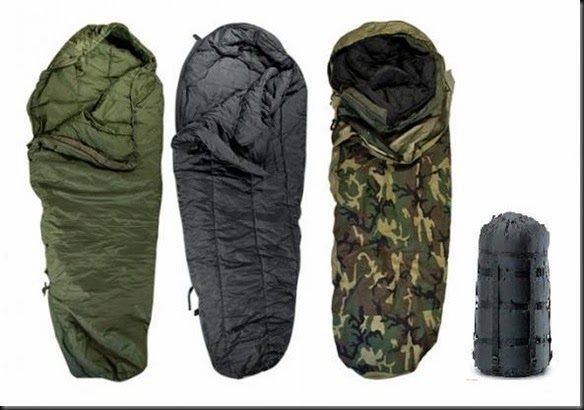
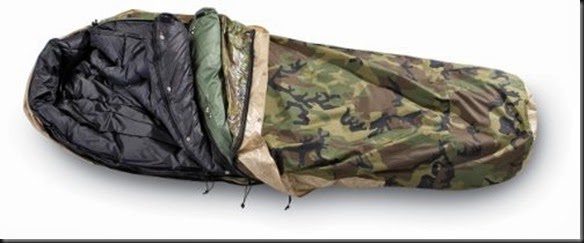
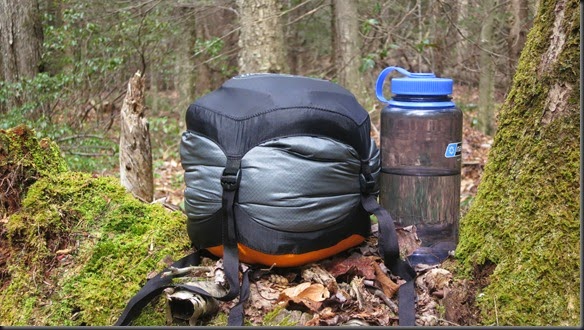
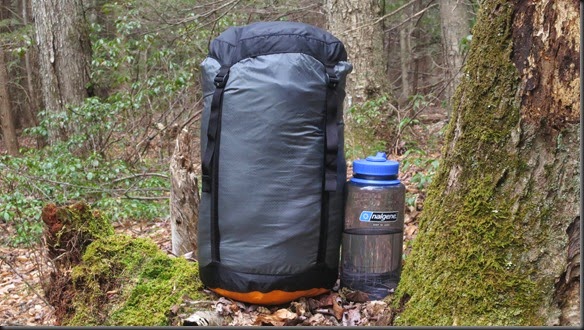
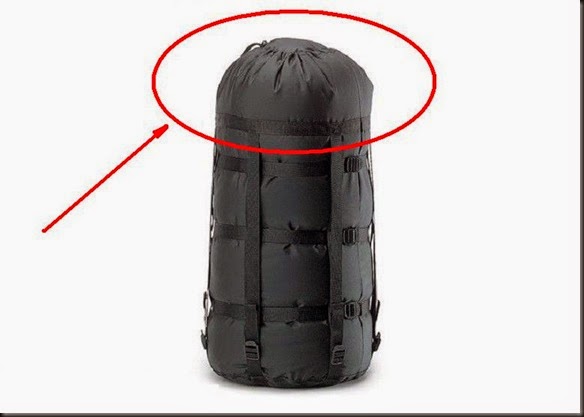
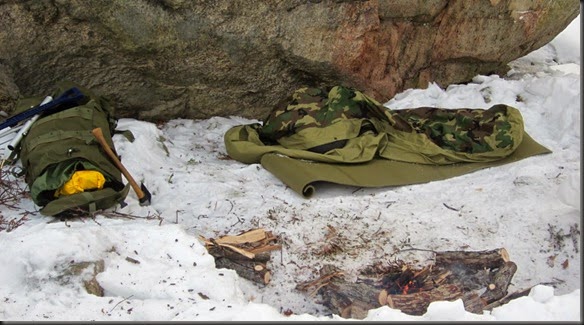
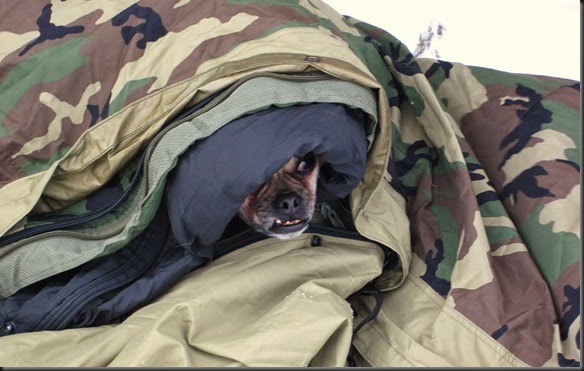
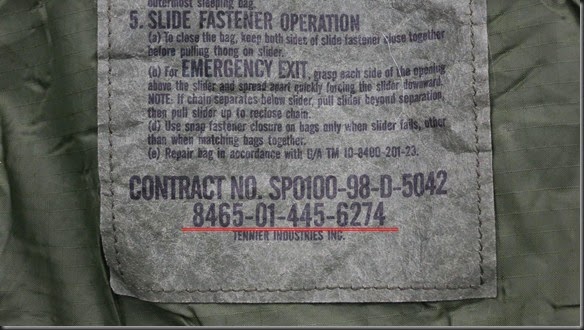
No comments:
Post a Comment